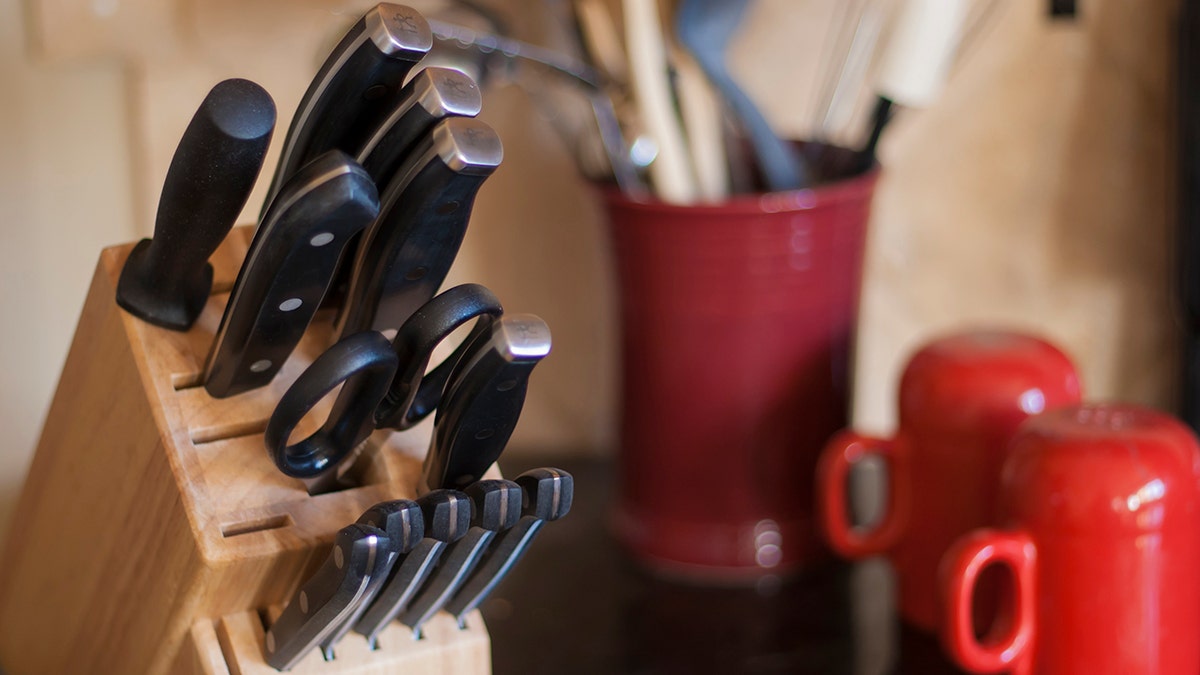
Do you really need a whole knife set? (iStock)
We pay for a lot of things we don’t need. Exhibit A: The second tube of whatever fancy facial cream resides in your bathroom cabinet. Exhibit B: Anything from any infomercial ever. Exhibit C: Knife sets, those 14-piece cutlery displays that sit in blocks of wood on kitchen counters across the world. The ones that are full of knives that we will probably never find a use for.
We get it though. The knife set seems like a great deal. All of those knives, including some that have no concrete purpose or name, in one convenient package, for a very reasonable price. But we’ll let you in on a little secret. The home cook, when it comes down to it, only needs three knives in the kitchen. You can accomplish just about everything with an 8-inch chef’s knife, a 3-4-inch paring knife, and a serrated bread knife.
You don’t really need carving knives or any number of other highly specific, purpose-built blades when you’re just starting out. Not that those knives aren't useful or do what they're built to do extremely well — it's just that you probably don't need a thin, flexible knife made for filleting fish if you don't, you know, ever fillet fish. Knife sets seem to tack on things like kitchen shears, historically terrible steak knives, and bird’s beak paring knives in order to give you more bang for your buck. Really, you shouldn’t be paying for them at all. There is no bang; only your buck.
But easily the worst thing about knife sets is that there’s no freedom to choose. When you commit to a set, you’re committing to one brand making every single knife you own. You might absolutely love the chef’s knife that one brand makes, but feel totally weird holding the same company's paring knife.
Which brings us to the most important piece of advice: You should always hold a knife before you buy it. You should make sure you’re comfortable with the way it feels in your hand. If you're buying knives at a store that won't take one (or several) out, talk to you about it, and let you feel the weight of it in your hand before dropping a dime on it, you're at the wrong store. You wouldn’t buy pants without trying them on, right? Even if you got an extra pair for half the price, you’d be walking around looking pretty foolish. Let’s take that same try-it-on approach with knives. Well, almost. For the safety of your legs, we don’t suggest you actually wear them.
A tighter, more thoughtful knife lineup saves space and money, but really it’s about getting you comfortable with the bare minimum of knives you need and learning to use them to their full potential. You’re not going to become an onion-chopping expert by practicing the process with six different knives. You’re going to get there by using one.
